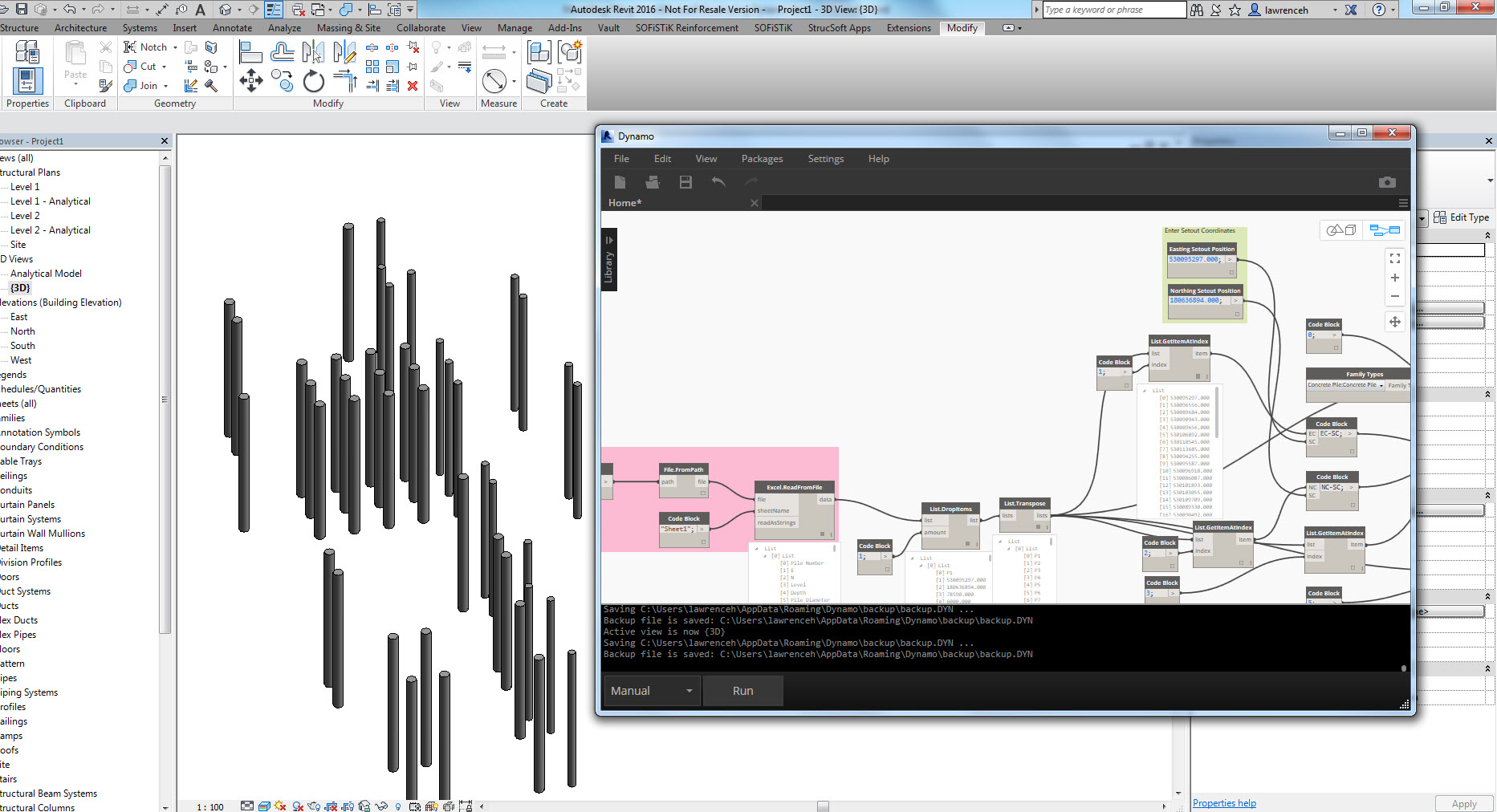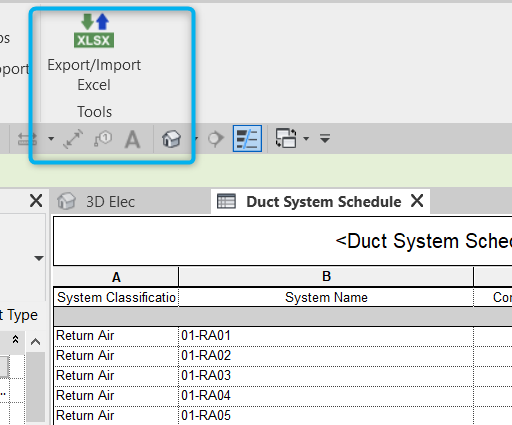Import Excel into Revit Seamlessly: A How-To Guide
Wiki Article
Excel-to-Revit: A Game-Changing Operations for Architectural Design - Unveiling the Tricks
Introducing excel-to-revit, the game-changing process that will certainly transform your design procedure. With excel-to-revit integration, you can simplify your architectural style, unlock performance, and make best use of partnership within your group. Obtain all set to take your building style to the following degree with excel-to-revit!The Power of Excel-to-Revit Assimilation

Think of the convenience of having the ability to upgrade and edit task information in Excel, and quickly see those changes mirrored in your Revit design. Say goodbye to hand-operated data access or tiresome updates. With Excel-to-Revit integration, you can conserve time and reduce mistakes by leveraging the power of Excel's functions and solutions to automatically create accurate information in Revit.
Not only does this assimilation improve performance, but it additionally enhances partnership among employee. You can quickly share Excel documents with colleagues, that can then import the data right into their Revit models. This advertises a smooth exchange of information and makes certain that everyone is collaborating with one of the most up-to-date information.

Improving Building Design With Excel-To-Revit
Enhancing architectural style is simplified with the usage of Excel-to-Revit (revit plugins). With this effective assimilation, you can enhance your process and conserve valuable time throughout the style procedure. By leveraging the capabilities of Excel and Revit, you can effortlessly move data between the 2 platforms, getting rid of the demand for manual data entrance and reducing the danger of mistakesExcel-to-Revit permits you to import and export data effortlessly, allowing you to quickly upgrade and modify your architectural styles. You can produce timetables, calculate quantities, and produce records in Excel, and afterwards move that information directly into your Revit design. This combination makes certain that your layout information is always updated and integrated, removing the need for manual updates and decreasing the possibilities of variances.
By making use of Excel-to-Revit, you can additionally make the most of the powerful computational capabilities of Excel. You can carry out complicated computations, examine information, and automate recurring tasks, all within Excel. With just a few clicks, you can import the results back right into Revit, allowing you to make informed design decisions and optimize your architectural styles.
Opening Performance: Discovering the Excel-to-Revit Operations
Maximize your efficiency by flawlessly incorporating Excel and Revit for a more effective operations. With the Excel-to-Revit process, you can unlock a whole new level of performance in your architectural style procedure. By utilizing the power of Excel's information administration capabilities and combining it with the adaptability and accuracy of Revit, you can improve your style procedure and save valuable time.Among the crucial benefits of this combination is the capacity to import and export data between Excel and Revit. This means that you can conveniently transfer task details, such as area routines or product quantities, from one software application to the import excel into revit other, getting rid of the demand for manual data access and lowering the opportunities of errors. You can also develop customized solutions and calculations in Excel to automate repeated tasks and perform complex computations, which can then be effortlessly integrated into your Revit versions.
Moreover, the Excel-to-Revit process permits for better sychronisation and cooperation between staff member. With Excel functioning as a central data hub, several employee can deal with various elements of the task at the same time, upgrading and sharing details in real-time. This not only boosts communication yet also ensures that every person is functioning with the most updated data, removing the risk of variances.
Making The Most Of Collaboration: Excel-to-Revit for Architectural Teams
By effortlessly incorporating Excel and Revit, building groups can considerably enhance collaboration and accomplish more effective design outcomes. When using this effective workflow, you can easily move data in between Excel spreadsheets and Revit designs, enhancing the layout process and improving communication among employee. With Excel-to-Revit integration, you can effortlessly import task information, such as space timetables, product amounts, and task criteria, straight into Revit, removing the need for hand-operated data entry and lowering the chances of mistakes. This smooth connection enables real-time updates, ensuring that every person is collaborating with the most up-to-date info and preventing discrepancies between various papers.Moreover, by leveraging Excel's effective calculation capacities, you can execute complicated computations and analysis on your design data, giving important insights and driving informed decision-making. This assimilation also allows you to export data from Revit to Excel, enabling you to create detailed reports, charts, and graphs for presentations and analysis. This collective process advertises reliable interaction and coordination among team participants, as Excel works as a central hub for information monitoring and sharing.
Total, by embracing the Excel-to-Revit operations, architectural teams can achieve greater levels of collaboration, effectiveness, and precision in their style procedure. revit tools. This combination encourages teams to collaborate flawlessly, making certain that everybody is on the same page and adding to the success of the task
Revealing the Secrets of Excel-to-Revit Assimilation

One of the keys of Excel-to-Revit combination is the ability to utilize the power of solutions and estimations in Excel to drive specifications and produce complicated geometries in Revit. You can link Excel spreadsheets to Revit households, permitting you to input information straight right into the spread sheet and have it instantly upgrade in the Revit version. This enhances the layout process and guarantees precision and uniformity throughout the job.
One more key is the ability to develop custom timetables and reports in Excel, utilizing information drawn out from Revit. This allows you to imagine and analyze project information in a manner that is not feasible within Revit alone. You can conveniently create quantity liftoffs, cost estimates, and job timelines, supplying important insights for decision-making and task monitoring.
Furthermore, Excel-to-Revit combination makes it possible for reliable collaboration among team members. Multiple users can work on the very same Excel spread sheet concurrently, making it simpler to collaborate and track changes. You can additionally use Excel's commenting attribute to give feedback or communicate design revisions.
Final Thought
So there you have it, the secrets of excel-to-revit integration have been introduced. This game-changing workflow has the power to enhance architectural style, unlock performance, and make the most of cooperation for architectural groups. By combining the power of Excel and Revit, architects can now work more successfully, conserve time, and produce much better designs. So why wait? Beginning integrating excel-to-revit combination into your architectural layout process today and change the method you work.With just a couple of clicks, you can import the outcomes back right into Revit, enabling you to make educated style choices and optimize your architectural layouts.
By utilizing the power of Excel's data management abilities and integrating it with the versatility and accuracy of Revit, you can simplify your style process and save useful time.
By perfectly incorporating Excel and Revit, architectural groups can considerably enhance partnership and achieve more reliable design outcomes. When utilizing this effective operations, you can conveniently move information in between Excel spread sheets and Revit versions, streamlining the style procedure and enhancing interaction amongst group members.Furthermore, by leveraging Excel's effective computation capabilities, you can perform complex estimations and analysis on your design data, driving and providing important understandings educated decision-making.
Report this wiki page